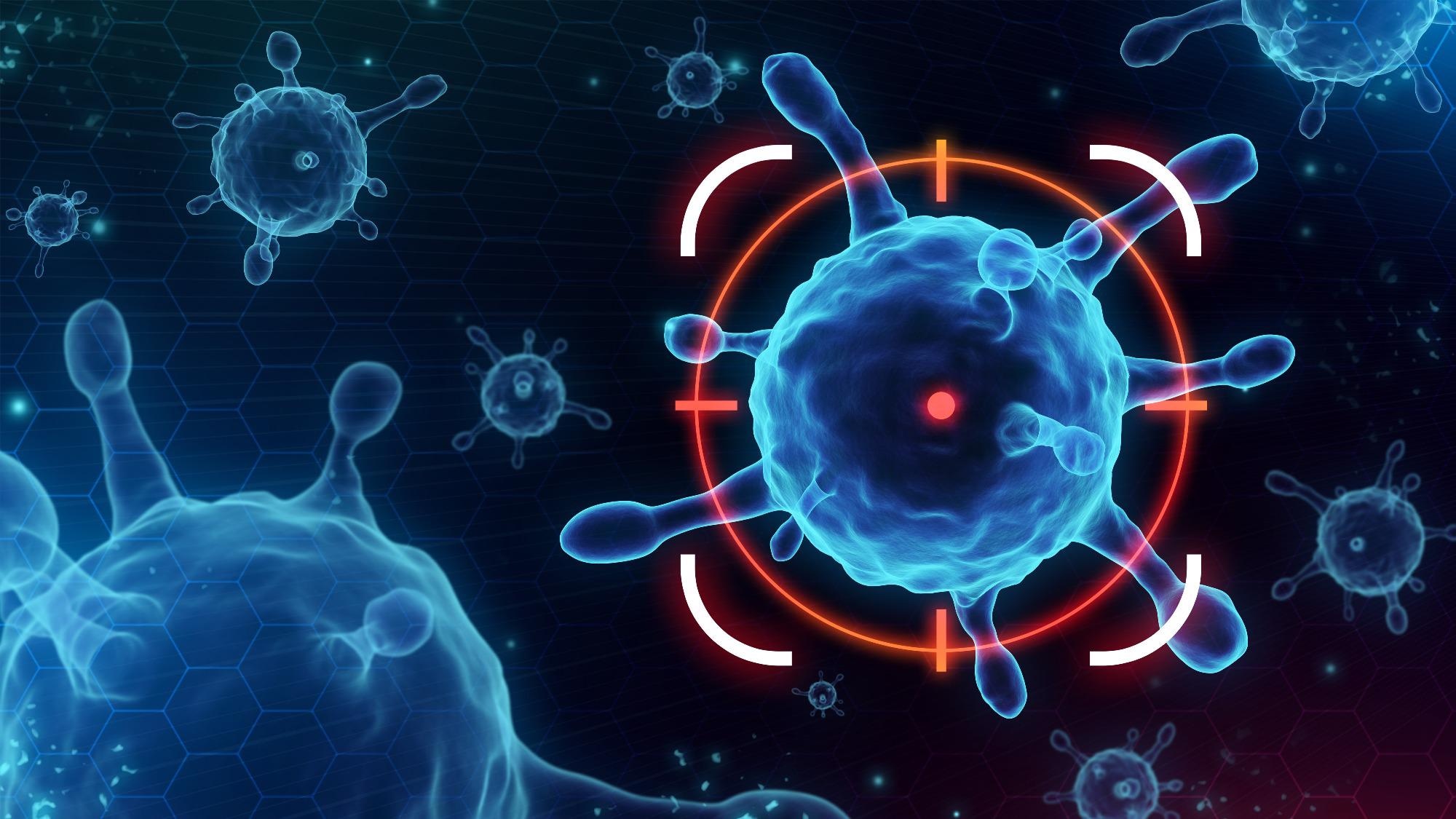
Image Credit: Shutterstock/ TAW4
Researchers have identified the physical mechanism that allows gold nanoparticles to effectively kill bacteria. The finding could lead to wider applications in the medical field.
It has been understood for some time that certain nanoparticles can kill bacteria, but the mechanism that causes this has, thus far, been something of a mystery. This hasn't stopped nanoparticles from being adopted as an antibacterial agent in biomedical, industrial, and commercial applications. But a better understanding of this antibacterial agency could improve methods and widen an already impressive range of applications.
A team of researchers across several different disciplines from institutes around the globe have come together to do just this, and the researchers believe that they have hit upon an answer to this puzzle. The team found that gold nanoparticles possess a toxic property that can cause the mechanical deformation of bacteria that leads to cell rupture and death.
The results, which could assist in the search for nanomaterials with antibacterial properties, are discussed in a paper published in the journal Advanced Materials¹.
A breakthrough in knowledge of how nanoparticles can combat bacteria is vitally needed in the face of a looming antibiotic crisis. Bacteria is emerging that shows increasing resistance to antibiotics as a result of both the medication's over-use and its misuse. Thus, an alternative method to combat bacteria can't come soon enough.
Discovering the Golden Secret that Destroys Bacteria
Gold has a wide range of medical applications that date back to as early as the ancient Egyptian civilization. Modern applications of this valuable metal include cancer treatments — arguably the most impressive being its use in chemotherapy for tumors — and the diagnosis of AIDS/ HIV.
Many of these applications depend on a particular property of gold; the fact that it is chemically inert. This means that it doesn't react when it comes into contact with an organism. But, just because the gold particle doesn't change, that doesn't mean it doesn't change the organism. It can— sometimes devastatingly so.
The team's study shows that inert gold nanoparticles possess a physical mechanism that can rip apart the bacteria's cell wall killing it. They discovered this by synthesizing gold nanoparticles in the lab, which had an almost perfect spherical shape. The team also created alternative gold nanoparticles that had a star shape in an attempt to discover which shape is most effective in the destruction of bacteria.
Despite having different shapes, the nanoparticles had similar sizes — all measuring around 100 nanometers, meaning you'd fit about eight across the width of a human hair.
The team then studied the nanoparticles which they had created to determine how they interact with live bacteria. They found that the nanoparticles caused the bacteria to die after experiencing what seemed like a massive leak
Deflating Bacteria Like a Beach Ball
Suspecting that a physical mechanism was responsible for the rupture of the cell wall and the death of the bacteria, the team ran a series of numerical simulations. These were explicitly designed to show them how a layer of nanoparticles could apply enough mechanical stress to the bacteria's cell walls to break them
We find that the bacteria become deformed and deflate like a ball that is having the air let out before dying in the presence of these nanoparticles. [It was] as if the cell wall had spontaneously exploded.
Vladimir Baulin, Department of Chemical Engineering, Universitat Rovira I Virgili, Spain
They discovered that the mechanic action caused by gold nanoparticles was similar to applying pressure to a balloon, with areas of the cell wall stretching and deforming at different points until the bacteria exploded.
The researchers then progressed from numerical models to an artificial model of a cell wall membrane. They used this to measure the membrane's response when it comes into contact with gold nanoparticles.
The team also discovered that the near-perfectly spherical nanoparticle caused damage to the bacteria more effectively and rapidly. They put this down to the fact that they had a greater 'affinity' and more interaction with the surface area of the cell membrane than their star-shaped counterparts.
We found that the model spontaneously contracted until it completely collapsed. Thus proving the hypothesis that nanoparticles apply a mechanical stretch on the cell membrane of the bacteria.
Vladimir Baulin, Department of Chemical Engineering, Universitat Rovira I Virgili, Spain
This research conducted by Baulin and the team, coupled with their unique use of different modeling techniques, could help biologists and material scientists finally understand how nanoparticles destroy bacteria. This could, in turn, assist in the development of effective methods to protect us from bacteria that lead to a wide range of ailments.
References
¹Linklater. D. P., Baulin. V. A., Le Guéve. X., Ivanova. E. P., et al, [2020], 'Antibacterial Action of Nanoparticles by Lethal Stretching of Bacterial Cell Membranes,' Advanced Materials, [DOI: 10.1002/adma.202005679]
Disclaimer: The views expressed here are those of the author expressed in their private capacity and do not necessarily represent the views of AZoM.com Limited T/A AZoNetwork the owner and operator of this website. This disclaimer forms part of the Terms and conditions of use of this website.